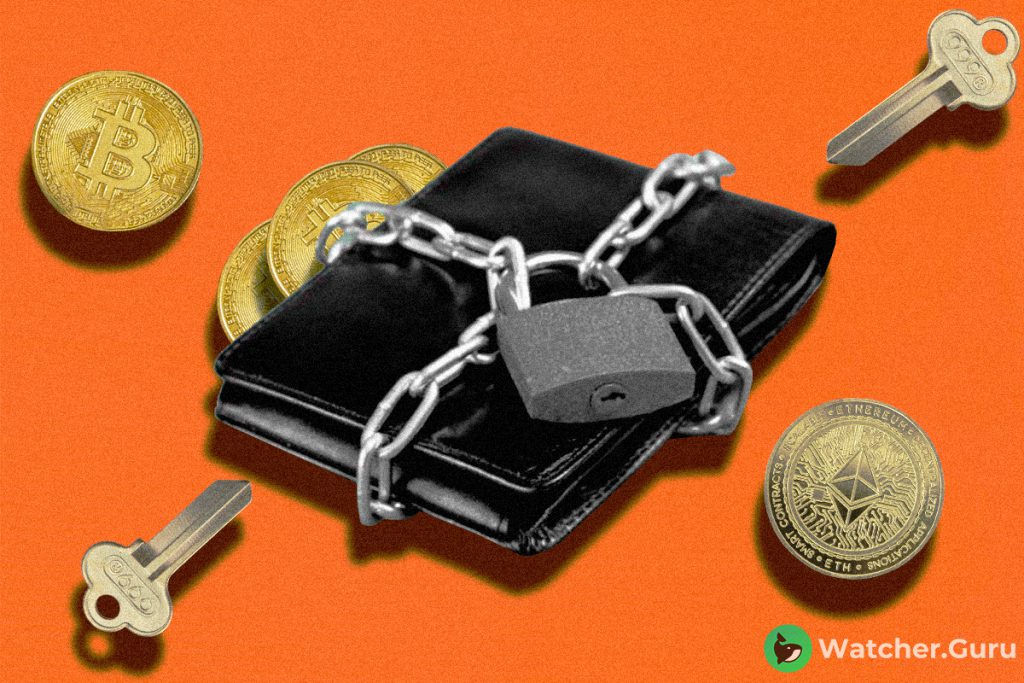How Many Crypto Exchanges Have Failed?

How Many Crypto Exchanges Have Failed? A Deep Dive into the Crypto Market
The crypto market has experienced tremendous growth and volatility since its inception in 2009.
With cryptocurrencies like Bitcoin reaching astonishing highs and the total market cap surpassing $3 trillion in November 2021, the industry has attracted numerous investors and traders.
However, alongside the success stories, many failed crypto exchanges have filed for bankruptcy, leaving investors in turmoil.
In this article, we will take a deep dive into the crypto market to understand the extent of failed crypto exchanges, the reasons behind their failures, and provide valuable tips to avoid investing in failed coins in the future.
Also read: Solana Surges by 6% Despite Bitstamp’s Delisting Announcement
Bravenewcoin.com
The Rise and Fall of Crypto Exchanges
Crypto exchanges play a vital role in the growth of the cryptocurrency industry.
Furthermore, they serve as gateways for traders and investors to access the blockchain and enter the world of decentralized finance.
Additionally, these exchanges enable users to purchase crypto tokens using fiat currencies, making it easier for individuals to participate in the crypto market. However, not all crypto exchanges have been successful.
So, many have faced financial difficulties, security breaches, or mismanagement, resulting in their failure.
Determining the exact number of failed crypto exchanges is challenging, but we can gain insights from various reports and incidents.
The Magnitude of Failed Crypto Exchanges
Firstly, the number of failed crypto exchanges has been significant over the years.
Furthermore, according to a report by Coinjournal.net, at least 23 exchanges failed in 2018. This number skyrocketed to a staggering 252% in 2019 and increased by 17% in 2020.
The year 2021 witnessed similar exchange failures compared to the previous year. However, the first six months of 2022 saw a 55% decrease in crypto exchanges shutting down.
Despite this decrease, the crypto market experienced significant turmoil, with notable collapses such as the May Luna crash and the November FTX bankruptcy.
These incidents led to a series of cryptocurrency business crashes, including those of lending protocols, crypto exchanges, and financial firms.
Also read: Cardano Welcomes Bitcoin Liquidity on Mainnet via cBTC
Famous Crypto Exchange Failures
 Planetcompliance.com
Planetcompliance.com
Several crypto exchange failures have left investors and the crypto industry in shock. Here are some of the most notorious examples:
Mt. Gox: The Notorious Fall
One of history’s most infamous crypto exchange failures is the Mt. Gox incident. Founded in 2010, Mt. Gox became the largest Bitcoin trading platform by 2014, handling over 70% of total Bitcoin transactions.
However, the exchange experienced technical issues and bugs, signaling trouble in 2013. On February 23rd, 2014, Mt. Gox suddenly shut down, reporting a security breach that resulted in the loss of 850,000 BTC, out of which 750,000 BTC belonged to its customers.
The estimated value of the lost Bitcoin tokens was $450 million at the time.
The Mt. Gox failure significantly impacted the cryptocurrency industry, highlighting the need for transparency, security, and regulation in the crypto space.
Bitfinex: The Hong Kong Hack
Bitfinex, a Hong Kong-based crypto exchange, faced a security breach in August 2016. The exchange was one of the largest crypto trading platforms by market cap at the time. Hackers stole 119,756 BTC, valued at around $72 million, from the exchange.
Bitfinex immediately launched an investigation and offered a reward for any information leading to the recovery of the stolen funds. However, only a small portion of the stolen funds were recovered.
Despite the incident, Bitfinex has improved its security measures and continues to provide its crypto trading platform to users worldwide.
QuadrigaCX: Mismanagement and a Ponzi Scheme
QuadrigaCX, once the largest cryptocurrency exchange in Canada, filed for bankruptcy in 2019. The exchange abruptly stopped functioning, leaving over 100,000 creditors with liabilities exceeding CAD 215.7 million.
The company claimed to have lost access to the cold wallet holding customer funds due to the death of its CEO, Gerald Cotten. Investigations revealed serious mismanagement, with all the funds under the company’s custody controlled by Cotten alone.
It was discovered that Cotten used customers’ money to pay other customers, operated a Ponzi scheme, and financed his trading losses and lavish lifestyle.
The QuadrigaCX case shed light on the need for proper control, oversight, and regulation in the crypto industry.
 Source: CTV News
Source: CTV News
Cryptopia: The New Zealand Breach
Cryptopia, a New Zealand-based cryptocurrency exchange, faced a major security breach in January 2019. Hackers stole millions of dollars worth of crypto funds from the exchange.
The breach was the result of a highly sophisticated hacking operation that targeted both the core wallets and secondary wallets of the platform.
Despite multiple investigations, the hackers remain unknown, and the stolen crypto assets are estimated to be worth around $16 million to $23 million.
The incident raised concerns about the vulnerability of even reputed exchanges to hacking attacks and highlighted the importance of robust security measures.
FTX: The Unexpected Collapse
In November 2022, FTX, one of the largest crypto trading platforms by trading volume, declared insolvency and failed to fulfill withdrawal demands.
The collapse of FTX, which filed for Chapter 11 bankruptcy in the US, sent shockwaves through the crypto industry.
The downfall of FTX was triggered by a series of events, including allegations of undisclosed leverage, solvency concerns, and risky trades. The exchange funneled customers’ funds to Alameda Research, resulting in significant losses.
FTX owes over $9 billion to more than 1 million creditors, marking one of history’s most unexpected crypto exchange failures.
 Source: Outlook India
Source: Outlook India
Reasons Behind Crypto Exchange Failures
Crypto exchange failures can be attributed to various factors. Here are some common reasons why crypto exchanges fail:
Lack of Security Measures
Security breaches and hacks pose a significant risk to crypto exchanges. Weak security measures, vulnerabilities in the exchange’s infrastructure, or inadequate protection of user funds can lead to devastating consequences.
Crypto exchanges must employ robust security protocols, multi-factor authentication, cold storage solutions, and regular security audits to safeguard user funds.
Financial Mismanagement
Improper financial management, a lack of transparency, and misallocation of funds can contribute to the failure of crypto exchanges.
If an exchange fails to maintain adequate reserves or misuses customer funds, it can quickly face financial difficulties. Proper financial oversight, independent audits, and adherence to regulatory frameworks are crucial for the long-term viability of crypto exchanges.
Regulatory Challenges
The crypto industry operates in a constantly evolving regulatory landscape. Lack of clear regulations, legal uncertainties, or non-compliance with existing laws can lead to regulatory challenges for crypto exchanges.
Failure to navigate these regulatory hurdles can result in legal action, fines, or even the shutdown of an exchange.
Lack of Liquidity
Liquidity is essential for the smooth functioning of crypto exchanges. If an exchange lacks sufficient liquidity, it can impede trading activities, discourage investor participation, and hinder the growth of the platform.
Low trading volumes and limited market liquidity can contribute to the failure of a crypto exchange.
Lack of User Trust
User trust is vital for the success of any crypto exchange.
Users may lose confidence in the platform if an exchange fails to establish trust through transparent operations, secure custody of funds, and responsive customer support. A loss of user trust can lead to dwindling trading volumes and, ultimately, the failure of the exchange.
Tips to Avoid Investing in Failed Coins
Investing in cryptocurrencies carries inherent risks, but there are steps you can take to minimize the chances of investing in failed coins. Here are some valuable tips:
Research and Due Diligence
 Source: Payments Journal
Source: Payments Journal
Thoroughly research a crypto project before investing your hard-earned money. Evaluate the team behind the project, their experience, and their track record.
Assess the project’s whitepaper, roadmap, and technological innovations. Look for red flags such as a lack of transparency, unrealistic promises, or plagiarized content.
Conduct due diligence to ensure that the crypto project is legitimate and has a viable long-term vision.
Assess Market Demand and utility.
Invest in cryptocurrencies that solve real-world problems and have a clear use case. Assess the demand for the project’s utility and evaluate its potential for adoption.
Consider the market competition and whether the project offers unique features or advantages over existing solutions. Investing in cryptocurrencies with strong market demand and utility can increase the likelihood of long-term success.
Review Exchange Listings and Trading Volume.
Check if the cryptocurrency is listed on reputable exchanges with high trading volumes. A lack of exchange listings or low trading volumes can indicate a lack of interest from traders and investors, making buying or selling the coin difficult.
Additionally, investing in cryptocurrencies with strong exchange support and significant trading volumes can provide liquidity and enhance market stability.
Stay Informed About Regulatory compliance.
Keep up with the regulatory landscape surrounding cryptocurrencies and exchanges. Be aware of any legal challenges, compliance requirements, or regulatory actions that may impact the project you are considering.
Furthermore, investing in cryptocurrencies that prioritize regulatory compliance can mitigate the risk of regulatory crackdowns or legal issues.
Diversify Your Crypto portfolio.
Diversification is key to managing risk in any investment portfolio, including cryptocurrencies.
Spread your investments across different cryptocurrencies, sectors, and risk levels. Diversification can help mitigate the impact of any single crypto exchange failure or coin collapse.
Secure Your Funds with Hardware wallets

Protect your crypto investments by using hardware wallets to store your digital assets securely.
Hardware wallets provide an extra layer of security by keeping your private keys offline and away from potential hacking attempts.
Safeguarding your funds in hardware wallets can minimize the risk of losing your investments in the event of a crypto exchange failure.
Conclusion: How Many Crypto Exchanges Have Failed?
In conclusion, the crypto market has witnessed numerous crypto exchange failures, leaving investors devastated and highlighting the need for caution when investing in cryptocurrencies. Understanding the reasons behind these failures, conducting thorough research, and staying informed about market trends and regulatory developments are essential for mitigating risks.
Additionally, by following the tips provided in this article, you can navigate the crypto market more confidently and reduce the chances of investing in failed coins.
Remember, investing in cryptocurrencies carries inherent risks, and it is crucial to exercise due diligence and make informed decisions to protect your investments in this rapidly evolving industry.
Disclaimer: The information provided in this article is for informational purposes only and should not be considered investment or financial advice. Always conduct your research and consult with a professional financial advisor before making any investment decisions in the crypto market.
Source link
#Crypto #Exchanges #Failed





